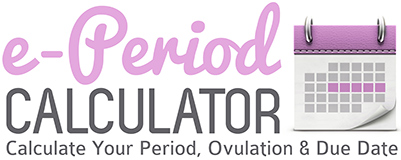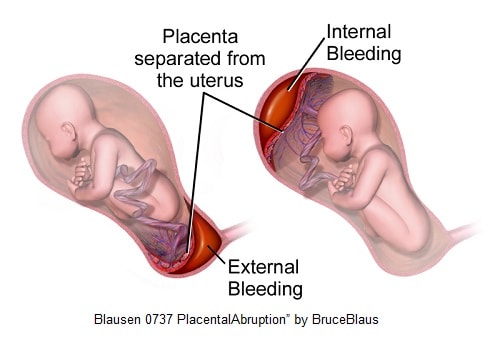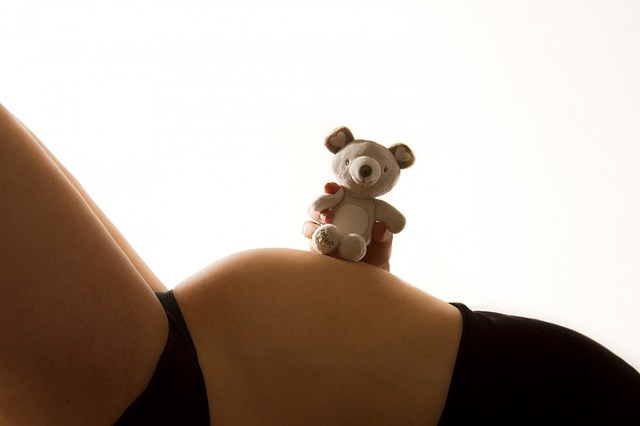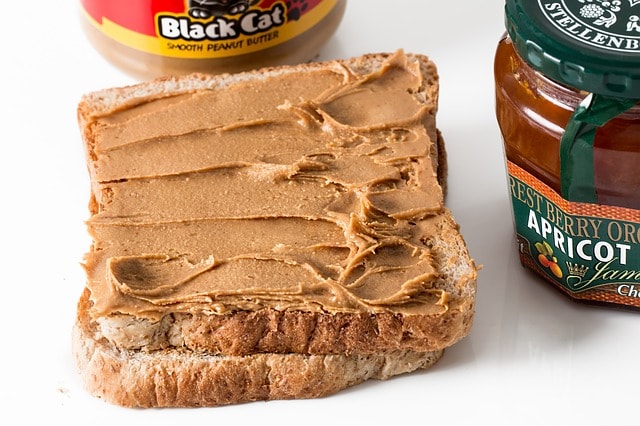Stretch marks are one of the post-partum body problems that are harder to get rid of. You can always exercise to remove pregnancy pounds, but you need to do more to clear up stretch marks.
Although they will fade, they won’t disappear completely. But there are ways to better manage them.
What are stretch marks?
These are tears in the layers of skin that happen when your body grows faster as your pregnancy progresses, stretching skin layers to the point that they can no longer keep up.
The elastic fibers under the surface of the skin break in the process.
Stretch marks may appear on your upper arms, tummy, breasts, thighs, and bottoms. But they are more prominent in the belly and breasts because these two areas grow the most.
According to the American Academy of Dermatology, around 90% of women will have stretch marks after the 6th or 7th month of pregnancy.
If stretch marks run in the family, your predisposition to having them is higher because genetics play a role.
Women with lighter complexion will have pinkish stretch marks, while dark-skinned women will have stretch marks that are lighter in tone than that of their skin.
Stretch marks are not really preventable, which is why you need to focus on fading rather than preventing their occurrence.
How to deal with stretch marks
Use massage creams, oils, and other products
Gels that are made with a mix of hyaluronic acid and onion extract is said to help fade stretch marks after 12 weeks of daily use, according to one study.
Dermatologists also prescribe the use of retinoid, which speeds up cell turnover and stimulates the growth of new collagen.
Some of the products recommended to help lighten or remove stretch marks are:
Disclaimer: This post might contain affiliate links. In case you buy through these links, we may earn a small commission
6. Sieva Skincare Stretch Mark & Scar Removal Cream
Best used for silver tone and red tone stretch marks, this product contains natural ingredients that are guaranteed to enhance the skin’s natural repair process. These include cocoa butter, shea butter, rosehip seed oil, and olive oil.
It works for both old and new stretch marks but may not help with preventive use.
5. TriLASTIN-SR Intensive Stretch Mark Cream
If you want stretch marks to fade in as little as three weeks, this product is clinically proven to provide you with the results you’re looking for. It is perfume-free, paraben-free, and hypoallergenic.
Because it is a non-greasy formula, it does not leave stains on clothes.
The only downside with TriLASTIN-SR is that it has to be paired with another product to get the best results.
4. CeraVe Intensive Stretch Marks Cream
Recommended for very sensitive skin, this product does not contain perfume, phthalates, and parabens. What it contains are active ingredients like hyaluronic acid, ceramides, and argan oil.
It uses MVE delivery technology where the release of ingredients is controlled over time after application. This eliminates the need for re-application.
3. DreamBelly Stretch Mark Cream for Pregnancy
This product is recommended for women who are currently pregnant, although it can be used to improve skin post-delivery as well.
Some of its key ingredients are grape seed extract, rosehip oil, Aloe Vera, vitamin E, and a secret blend of natural oils and butter.
Although the cream is fairly thick, it is surprisingly non-sticky once applied to the skin.
2. Palmer’s Cocoa Butter Formula Tummy Butter for Stretch Marks
One of the classics, Palmer’s has been used by mothers for generations. It has been tested by dermatologists and in clinical settings.
It contains vitamin E, elastin, and collagen that can help treat stretch marks during and after pregnancy.
Unlike other stretch marks cream, it lacks powerful ingredients that some of the skin-smoothing and high-end creams have.
1. Mederma Stretch Marks Therapy Cream
76% of women swear by this product’s ability to reduce the appearance of stretch marks in just 12 weeks, according to a survey. It is also the number one brand that pharmacists recommend for stretch marks.
It is also used to prevent new stretch marks from appearing.
For best results, dermatologists recommend prolonged massage after application to help the skin completely absorb the cream and its ingredients.
It is not advisable for use in all trimesters of pregnancy, however. Only at the beginning of the second trimester.
Laser treatments
Apart from a topical approach of using creams and oils, you can also get rid of stretch marks through laser treatments.
Lasers are used to heat the skin, shrink dilated blood vessels, and boosts collagen growth.
There are two options available – fractional non-ablative laser treatment and pulse-dyed laser treatment.
Both options are quite expensive.
It may also require several sessions before results are visible and stretch marks are zapped away.
Doing exercises
Remember that stretch marks appear due to your body’s growth and the weight you gained during your pregnancy.
Although exercise doesn’t make stretch marks go away completely, working out the muscles of the affected area will help tone them.
And when you feel good about your looks, you won’t be bothered so much by stretch marks.
Whichever option you choose, always talk to your doctor, especially if you want to use cosmetic treatments during your pregnancy. Find out about possible side effects and whether or not the products you used will have an effect while nursing or when you want to get pregnant again.
Tretinoin-based cream for stretch marks, for example, can cause birth defects in unborn babies.










Thanks for sharing this great content.
You are very welcome.
These all product sounds amazing. I will definitely recommend these products. Thanks and keep sharing.